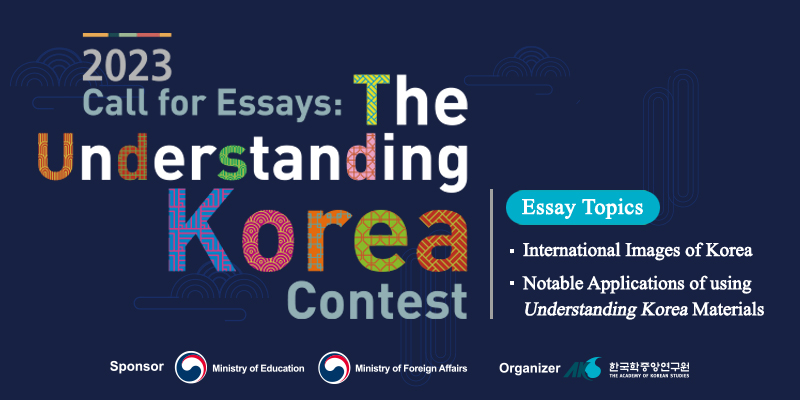Essay Contest Result

The Process of Reforestation in South Korea and the Implementation of Healing Forests
Reforestation is a crucial topic in the current context, where climate change and deforestation have had a significant impact on our environment. South Korea has emerged as a successful example in the reforestation process and has introduced an interesting initiative known as healing forests. This essay will analyze the process of reforestation in South Korea and explore how healing forests have been implemented as an innovative strategy to improve health and well-being in society.
The process of reforestation in South Korea has been a remarkable success, and healing forests have been a valuable contribution to this initiative. By combining forest restoration with human well-being, South Korea has shown how nature can play a vital role in our health and quality of life. The South Korean experience teaches us the importance of reforestation and how healing forests can be implemented in other countries to achieve a balance between environmental conservation and human well-being. These approaches can serve as inspiration and guidance for other countries seeking to restore and protect their ecosystems while enhancing the quality of life for their citizens, and allow our planet to become a better, healthier and harmonious place to live.
1. The Process of Reforestation in South Korea:
South Korea's ancient history, focused on wellbeing, has become nowadays in an intense industrial and urban development that led to a significant loss of forest cover. However, the South Korean governments recognizing the importance of forests, have taken strong measures to reverse this situation. Through well-structured public policies and programs, South Korea has achieved remarkable results in its reforestation process. Nurseries have been established, tree planting has been incentivized, and community participation in forest conservation has been encouraged.2. Healing Forests as an Innovative Strategy:
Healing forests are a unique concept that combines trees with improving people's health and well-being. These forests are specifically designed to promote relaxation, reduce stress, and enhance quality of life. South Korea has been at the forefront of implementing healing forests worldwide, and also recognizing the therapeutic benefits of nature in modern society.3. Benefits of Healing Forests:
Healing forests offer a wide range of physical and mental health benefits. Various scientific studies have shown that spending time in nature can lower blood pressure, decrease stress levels, improve mood, and strengthen the immune system. Healing forests also provide opportunities for outdoor recreational activities such as hiking, yoga, and meditation, contributing to a healthy and active lifestyle.4. The Importance of Environmental Education:
The successful implementation of healing forests in South Korea has also been supported by robust environmental education. Awareness and understanding of the importance of nature in health have been promoted through educational programs targeting all age groups. Environmental education has played a crucial role in raising societal awareness and creating a sense of responsibility toward forest conservation and the environment in general, and in that way, becoming stronger social responsibility.5. Community Participation:
In addition to government policies, South Korea has fostered active community participation in the reforestation process. Programs involving citizens in tree planting and care have been established, creating a sense of ownership and shared responsibility. This community participation not only accelerates reforestation efforts but also strengthens social bonds and promotes environmental consciousness.6. Scientific Research:
The implementation of healing forests in South Korea has been based on rigorous scientific research. Studies conducted in collaboration with universities and health experts have provided solid evidence of the therapeutic benefits of nature. This has supported informed decision-making and strengthened public confidence in healing forests as an effective intervention in healthcare.7. Ecotourism and Sustainable Economic Development:
Healing forests in South Korea have not only improved people's health and well-being but also generated sustainable economic opportunities. Ecotourism has flourished in these areas, attracting both local and international visitors interested in experiencing the benefits of nature. This has contributed to job creation and the economic development of local communities while promoting forest conservation.8. Green Infrastructure:
Reforestation in South Korea has involved the integration of green infrastructure in urban environments. Green corridors, vertical gardens, and green roofs have been created to increase vegetative cover and improve air quality in urban areas. These green infrastructures also provide spaces for recreation and community gatherings, contributing to urban well-being.9. International Collaboration:
South Korea has shared its experience and knowledge in reforestation and healing forests internationally. They have participated in collaborations and joint projects with other countries, exchanging best practices and promoting global cooperation in forest conservation. This demonstrates their commitment to environmental protection beyond their borders and their role as a leader in sustainability.The process of reforestation in South Korea has been a remarkable success, and healing forests have been a valuable contribution to this initiative. By combining forest restoration with human well-being, South Korea has shown how nature can play a vital role in our health and quality of life. The South Korean experience teaches us the importance of reforestation and how healing forests can be implemented in other countries to achieve a balance between environmental conservation and human well-being. These approaches can serve as inspiration and guidance for other countries seeking to restore and protect their ecosystems while enhancing the quality of life for their citizens, and allow our planet to become a better, healthier and harmonious place to live.

